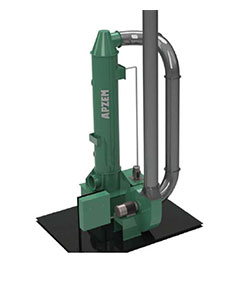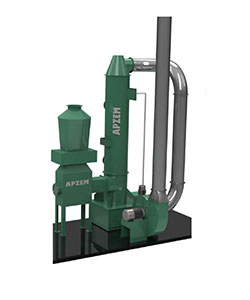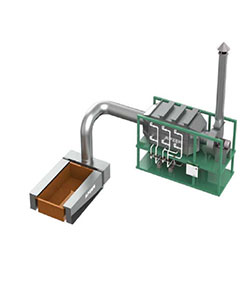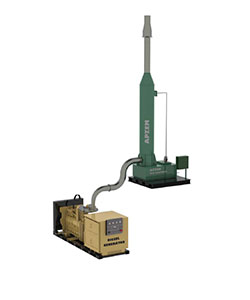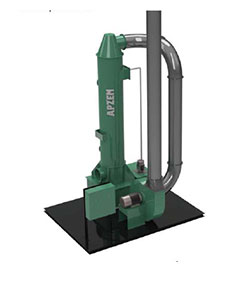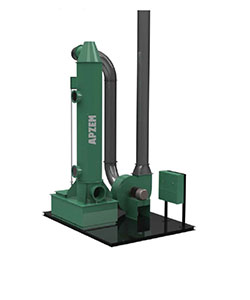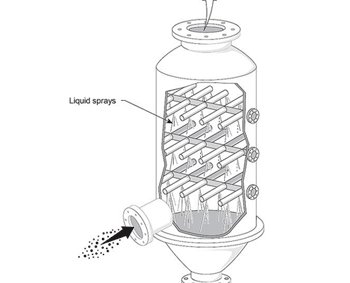Ammonia is a versatile chemical compound widely used in various industries, including agriculture, refrigeration, and manufacturing. However, its presence in the air can be problematic, leading to health hazards, environmental pollution, and corrosion. This blog explores the hindrance of ammonia in industries and sheds light on how wet scrubbers neutralize ammonia gas, mitigating its adverse effects.
The Hindrance of Ammonia in Industries
Health Risks: Ammonia gas can cause severe health problems when inhaled, such as eye and throat irritation, respiratory issues, and even chemical burns. Workers in industries that handle ammonia, such as fertilizer production plants, refrigeration facilities, and chemical manufacturing units, are particularly at risk. Furthermore, accidental ammonia leaks can affect nearby communities, posing a threat to public health.
Environmental Impact: Ammonia emissions contribute to environmental pollution. When released into the atmosphere, ammonia can react with other pollutants, such as nitrogen oxides, to form particulate matter and ground-level ozone, contributing to smog formation. Ammonia deposition can also disrupt ecosystems and lead to water pollution, harming aquatic life.
Corrosion and Infrastructure Damage: Ammonia is corrosive to many materials, including metals and concrete. In industries where ammonia is present, equipment, pipelines, and structures can suffer damage over time. This corrosion not only compromises the integrity of industrial infrastructure but also increases maintenance costs and reduces operational efficiency.
The Role of Wet Scrubbers in Neutralizing Ammonia Gas
Wet scrubbers are an effective pollution control technology widely employed in industries to reduce harmful emissions. These devices utilize liquid solutions or slurries to remove pollutants from gas streams. When it comes to neutralizing ammonia gas, wet scrubbers offer several advantages:
Absorption: Wet scrubbers use a liquid medium, typically water or a chemical solution, to absorb and dissolve ammonia gas. As the gas passes through the scrubber, it comes into contact with the liquid, which facilitates the transfer of ammonia from the gas phase to the liquid phase.
Chemical Reactions: In some wet scrubbers, the liquid medium contains chemical agents, such as acids or alkalis that react with ammonia to form harmless compounds. For example, in an alkaline wet scrubber, the ammonia reacts with an alkaline solution to produce ammonium hydroxide, which is less hazardous and can be safely disposed of or further processed.
Particulate Removal: Wet scrubbers can also remove particulate matter associated with ammonia emissions. By using a combination of liquid droplets and collection mechanisms, such as impaction or diffusion, wet scrubbers capture both gaseous ammonia and solid particles, effectively reducing emissions.
Benefits of Wet Scrubbers in Ammonia Control
Improved Air Quality: Wet scrubbers significantly reduce ammonia emissions, minimizing the risks to human health and improving air quality in and around industrial facilities. By neutralizing ammonia gas, wet scrubbers play a crucial role in maintaining a safe and healthy work environment.
Environmental Protection: The implementation of wet scrubbers aids in reducing ammonia’s environmental impact. By capturing and neutralizing ammonia emissions, these devices prevent the formation of harmful secondary pollutants, such as particulate matter and ground-level ozone. They also help in curbing ammonia deposition and its subsequent impact on ecosystems and water bodies.
Infrastructure Protection and Cost Savings: Wet scrubbers minimize corrosion caused by ammonia gas, extending the lifespan of industrial infrastructure and reducing maintenance expenses. By preventing damage to equipment and structures, industries can operate more efficiently and avoid costly repairs and replacements. The hindrance posed by ammonia gas in industries is a significant concern due to its health risks, environmental impact, and infrastructure damage. Wet scrubbers offer an effective solution by neutralizing ammonia emissions and capturing harmful particles. Implementing wet scrubbers not only protects workers’ health and improves air quality but also safeguards the environment and preserves valuable industrial infrastructure. As industries strive for sustainable and responsible operations, wet scrubbers play a vital role in mitigating the adverse effects of ammonia gas, fostering a safer and cleaner future.
